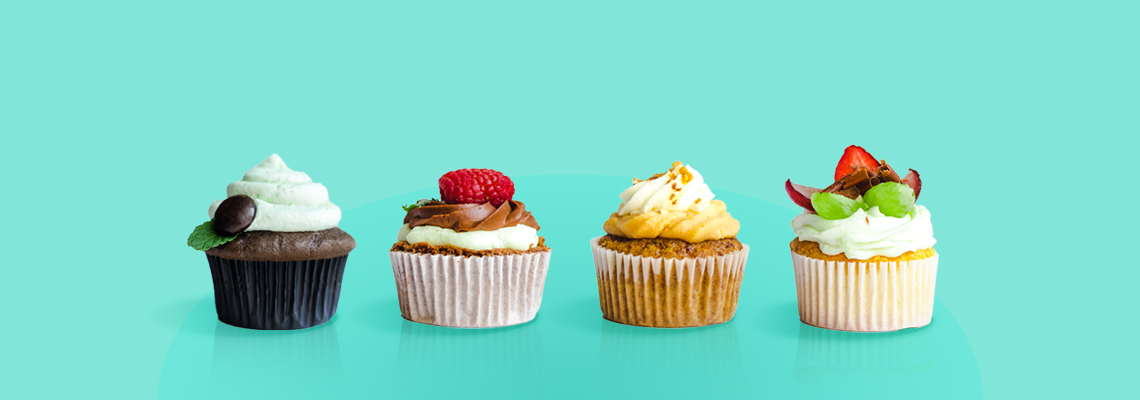Email newsletter has stood the test of time in digital marketing. It still remains one of the most effective ways to connect with your audience. Unlike any other marketing channel, emails offer a direct line of communication with potential and current customers. But, creating a newsletter that actually gets opened, read, and acted upon requires more than just good writing.
Through years of evolution in digital marketing, certain practices have proven themselves time and again. This guide looks at effective strategies that successful email newsletter creators use. These strategies help them engage their subscribers and reach their email marketing strategy goals.
Table of contents
- The Foundation: Getting the Basics Right
- Subject Lines That Command Attention
- Optimal Timing and Frequency
- Design and Structure for Maximum Impact
- Visual Hierarchy That Works
- Mobile-First Design
- Content Strategy That Drives Engagement
- The 90/10 Rule
- Segmentation and Personalization
- Technical Excellence
- Deliverability Best Practices
- Analytics and Optimization
- Building Long-Term Relationships
- Consistency and Trust
- Community Building
- Conclusion
The Foundation: Getting the Basics Right
The journey to a perfect newsletter begins with mastering the fundamentals. At the heart of any successful email campaign lies the crucial first impression: your subject line. This gateway to your content deserves careful consideration and strategic crafting.
Subject Lines That Command Attention
Think of a subject line like a store's window display. It should be interesting enough to draw readers into your email. Your email subject line is your first—and sometimes only—chance to capture your reader's attention. The art of crafting effective subject lines combines several key elements:
- Stay under 50 characters to prevent cutting off in most email clients
- Create urgency without falling into the trap of clickbait
- Use personalization when appropriate
- Avoid spam trigger words and excessive punctuation
For example, instead of using "AMAZING OFFERS INSIDE!!!," try a more polished phrase like "5 Design Trends We're Watching This Week." Or, instead of saying "Check Out These Amazing Deals!", try "John, Your Custom Photography Tips Are Ready."
Optimal Timing and Frequency
Deciding when to send your newsletter and how often to contact subscribers is not just about industry rules. It’s also about knowing your audience's habits and preferences.
Timing and frequency play equally crucial roles in your newsletter's success. Finding the right cadence for your newsletter is crucial. While the perfect timing varies by industry and targeted audience, the conventional wisdom suggests:
- Business newsletters often perform best Tuesday through Thursday
- Morning deliveries (9-11 AM) typically see higher open rates
But, the truth is more nuanced. What matters most is establishing a consistent rhythm that your readers can anticipate and rely upon. Begin with a frequency that works for you. This could be weekly, bi-weekly, or monthly.
Watch how your audience reacts. Check engagement metrics on different days and times. Don’t hesitate to try new sending schedules. This will help you find what works best for your situation.
Design and Structure for Maximum Impact
The visual presentation of your newsletter shapes how readers interact with your content. Think of your newsletter's design as a chat with your reader. It should flow smoothly and help them easily understand the information you share.
Visual Hierarchy That Works
Your newsletter should have a clear visual hierarchy that helps readers navigate your content intuitively. It means that when creating your email templates, you need to:
- Use clear headings and subheadings to break up text
- Maintain consistent branding across all elements
- Include white space to prevent information overload
- Limit yourself to 1-2 fonts and 2-3 colors for clean and professional appearance
Mobile-First Design
With over 60% of emails being opened on mobile devices, mobile optimization isn't just a nice-to-have – it's essential for success. This shift in user behavior requires a fundamental change in how we approach newsletter design. Mobile-first design principles include:
- Use a single-column layout email design
- Make CTAs large enough to tap comfortably (at least 44x44 pixels)
- Ensure text is readable without zooming (minimum 16px font size)
- Responsive images that scale appropriately across devices
- Quick-loading content that respects users' data plans
Testing your newsletter across multiple devices and email clients is crucial. What looks perfect on your desktop might be unreadable on a smartphone, so thorough testing helps ensure a consistent experience for all subscribers.
Content Strategy That Drives Engagement
The 90/10 Rule
The secret to maintaining high engagement lies in the 90/10 rule. Dedicate 90% of your newsletter to valuable content and limit promotional material of your products or services to 10%. This approach builds trust and customer loyalty, and keeps readers coming back for more.
But what exactly constitutes "valuable content," and how can you consistently create it?
Valuable content takes many forms, but it always serves your readers' needs first. This might include:
- Industry insights that help readers stay ahead of trends
- Step-by-step guides solving common challenges in your field
- Expert interviews offering unique perspectives
- Case studies that demonstrate practical applications
- Behind-the-scenes looks that build connection and trust
The promotional 10% becomes more effective when it naturally flows from your value content. For instance, if you've just shared an in-depth guide about productivity techniques, a subtle mention of your productivity tool feels like a helpful resource rather than an interruption.
Consider this approach to content planning:
- Start by identifying your readers' top three challenges
- Create content clusters around these challenges
- Develop a content calendar that addresses these topics systematically
- Look for natural opportunities to integrate your promotional content
- Regular review and adjustment based on engagement metrics
Segmentation and Personalization
Personalization has evolved far beyond simply including a subscriber's name in the greeting. Modern newsletters succeed by delivering highly relevant content to different segments of their audience, often supported by AI-generated content tailored to reader interests. The goal is to humanize each draft so that the reader feel like the newsletter creators crafted it specifically for them.
Remember that one size rarely fits all in email marketing. Effective segmentation strategies include:
- Behavioral segmentation based on past interactions
- Interest-based groupings derived from click patterns
- Purchase history and product preferences
- Engagement levels and reading habits
- Geographic and demographic factors
For example, a technology newsletter might create different content streams for:
- Beginners who need more foundational content
- Intermediate users looking for specific applications
- Advanced readers seeking cutting-edge insights
- Decision-makers focused on strategic implications
Technical Excellence
The most beautifully crafted newsletter won't make an impact if it doesn't reach your subscribers' inboxes. Deliverability has become increasingly complex in today's email landscape. Spam filters and email clients grow more sophisticated by the day.
Deliverability Best Practices
Think of deliverability as the foundation of your email marketing house – without it, everything else crumbles. Ensure your newsletters actually reach your subscribers:
- Regular cleaning of inactive subscribers
- Prompt handling of bounces and complaints
- Implementation of sunset policies for disengaged subscribers
- Strategic re-engagement campaigns
Authentication and Security:
- Proper setup of SPF, DKIM, and DMARC records
- Regular monitoring of sender reputation
- Using a reliable email marketing software
- Compliance with anti-spam regulations
- SSL/TLS encryption for all email communications
Analytics and Optimization
The path to improvement lies in your ability to measure and analyze performance. Modern email marketing requires a data-driven approach, but don't let the numbers overwhelm you. Most email marketing platforms offer detailed email marketing campaign analytics. Focus on key elements that tell the story of your newsletter's performance:
Key Performance Indicators:
- Open rates: Measure subject line effectiveness
- Click-through rates: Indicate content relevance
- Conversion rates: Show action-driving capability
- Engagement time: Reveals content quality
- Unsubscribe rates: Signal potential issues
Testing Strategy:
- A/B testing subject lines
- Content format experiments
- Send time optimization
- Design element testing
- Call-to-action variations
Building Long-Term Relationships
Creating a successful newsletter is less about individual campaigns and more about fostering lasting connections with your readers. Think of your newsletter as an ongoing conversation rather than a series of broadcasts.
Consistency and Trust
Building trust takes time but pays dividends:
- Maintain a consistent voice and style
- Deliver on promised value in every issue
- Build recognizable patterns in your content
- Be transparent about data usage and privacy
- Handle mistakes promptly and honestly
Community Building
The most successful newsletters transform their subscriber base into a community. This transformation doesn't happen overnight, but rather through consistent efforts to engage readers beyond the inbox. Here’s what you can do:
- Encourage reader feedback and contributions
- Highlight community success stories
- Create opportunities for subscribers to connect
- Show appreciation for engaged subscribers
Conclusion
The perfect newsletter is not a destination but a journey of continuous improvement and adaptation. Successful email marketing campaigns are built on a foundation of technical excellence, driven by data, and sustained through genuine relationships with your readers.
When you use these tips for your newsletter, keep in mind that success does not come from following every rule perfectly. Instead, it comes from giving value to your readers. Make sure this value matches your brand and connects with your audience.
Begin with these basics as your foundation. Then, let your newsletter grow on your specific situation and audience input.
Focus on what your metrics show you. However, remember the human element that makes email newsletters a strong way to connect.
In the end, the best newsletters are those with their own voice. They also stick to key principles - value, consistency, and real engagement.
Key Takeaways
- Email newsletters remain highly effective for direct audience communication
- Master the fundamentals: use subject lines under 50 characters that create urgency without being clickbait, use personalization, and avoid spam triggers
- Optimize timing and frequency: establish a consistent sending rhythm that readers can anticipate and rely on
- Design for impact: Ensure a clear visual hierarchy with heading, consistent branding, ample white space, and limited fonts and colors, and mobile-first design
- Drive engagement with a strong content strategy: adhere to the 90/10 rule, dedicating 90% of your newsletter to valuable, reader-centric content, and only 10% to promotional material
- Implement advanced segmentation and personalization
- Prioritize technical excellence: focus on deliverability best practices by maintaining clean subscriber lists and ensuring proper authentication and security
- Leverage analytics and optimization: Use KPIs like open rates, click-through rates, engagement time and unsubscribe rates to measure performance
- Build long-term relationships by maintaining a consistent voice, delivering promised values, being transparent and promptly addressing mistakes
- Remember that success is an ongoing journey requiring continuous improvement and adaptation
Eager to put this knowledge to some use?








